Security Camera Placement — 5 Ideal Locations Around Your Home
Last Updated on
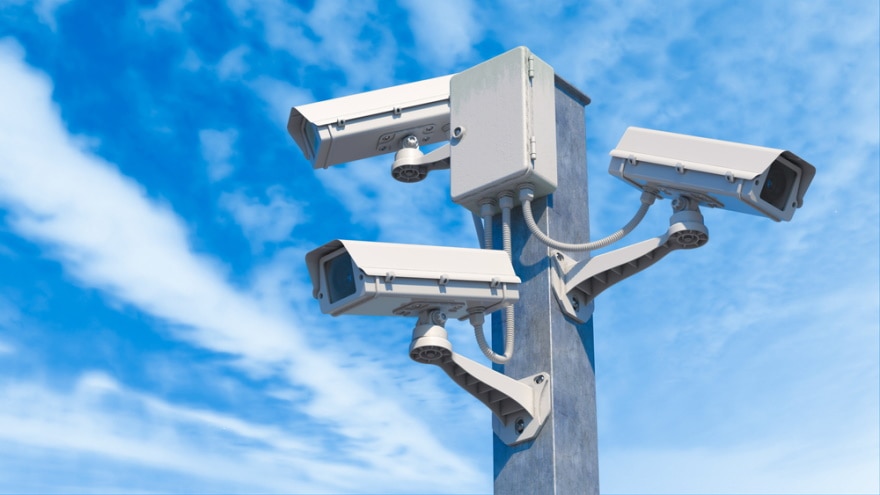
A security surveillance camera offers a reliable solution to deter burglars and robbers, record theft evidence, and monitor any suspicious activities in the surrounding area. Not only that, but security cameras allow you to monitor your home remotely on an app or a web interface.
Out of 7.69 million¹ property crime offenses in 2017, 1.4 million¹ were burglaries, which is indeed shocking. Furthermore, you should know that the possibility of a home without security cameras being a target of intruders is 2.7 times¹ more than that of homes with CCTV cameras.
That’s why it’s your foremost responsibility to protect your property and loved ones from robbers. Lucky for you, this guide explains the five ideal locations where you can place security cameras outdoors and indoors.
Before You Start
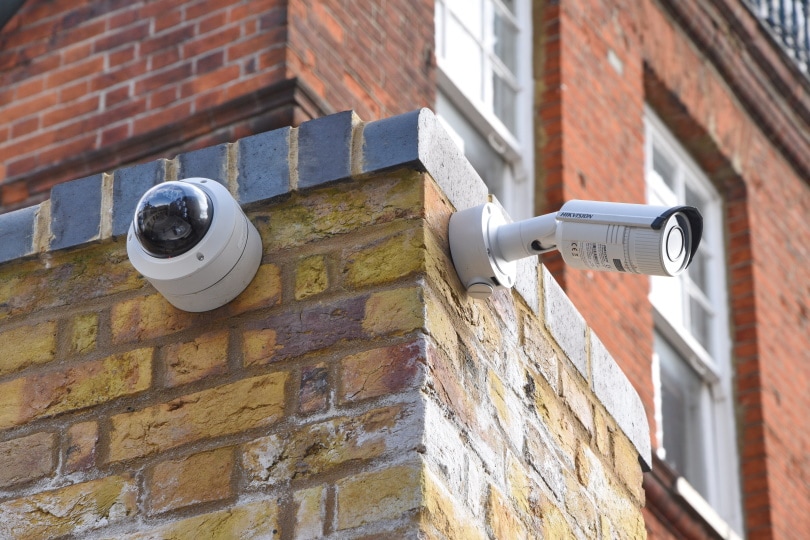
After selecting reliable security cameras, the next important decisions are how many security cameras you need and where to place them. Here are some stats¹ on burglars:
- 81% enter your home from the first floor
- 34% enter through the front door
- 22% enter from the back door
- 23% enter from the first-floor windows
- 9% enter from the garage
- 12% enter from other locations
We can infer from the above stats that some locations are the most recommended places to install security cameras.
Additionally, you must also plan a security system layout for your home by evaluating your security requirement. Here are a few questions that you should ask yourself and the company you purchase through:
- What is the total number of required security cameras?
- What are the types of security cameras with night-vision, weather-resistance, waterproofing, and durability features?
- Are there any requirements for indoor cameras that differ from outdoor ones?
- Do you have any off-street windows and doors?
- Were there any previous break-ins in your home?
- Do you have any dark corners or spots covered by trees in the backyard?
It’s essential for you to answer all the above questions, in all honesty, to evaluate the different locations to install the security cameras.
5 Ideal Locations Around Your Home to Install Security Camera
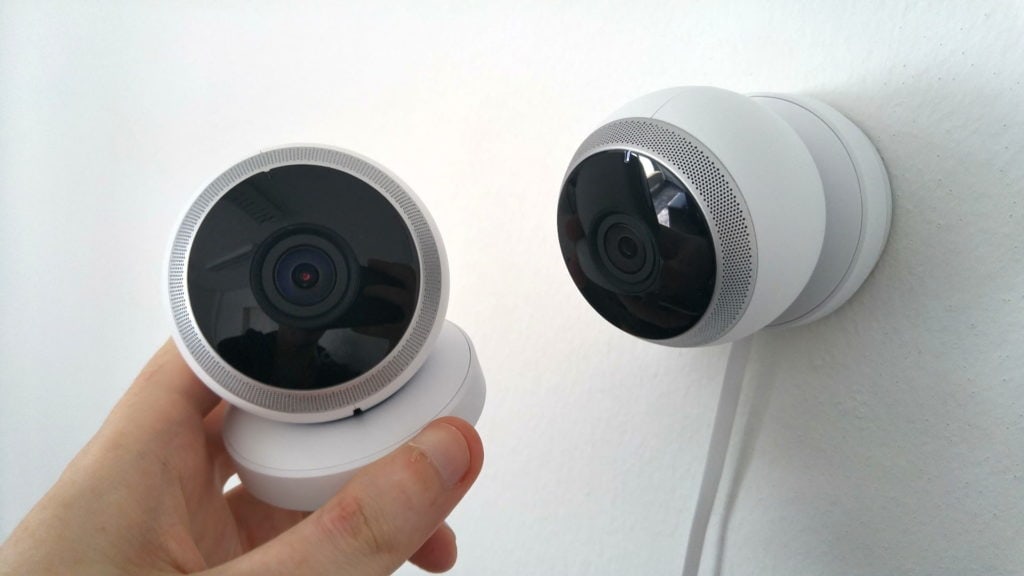
Keep reading to understand the ideal locations to mount the security cameras and other considerations to keep in mind.
Front Door
Whether you want to install a two, four, or eight-camera security system, you must install the first camera at the front door. Furthermore, you should mount the camera higher or at the second-floor level to keep it out of reach from the intruders.
The rule of thumb is to mount the camera at least 9 feet¹ above ground level to prevent vandalism. The front camera offers outstanding, real-time 24/7 monitoring of the people entering and leaving home, including delivery people, friends, neighbors, and strangers.
Moreover, you must not point the front camera directly into the sun or streetlights. The intense light leads to glare and contrast in the captured video and photos. That’s why you must utilize indirect light by positioning the cameras at different angles.
Back and Side Doors
As mentioned above, 22% of burglars enter from the back and side doors. Therefore, you should never point the cameras downward above the doors or windows, as it will only capture the intruder’s head, not their face. Instead, you should place the camera to capture a wide angle.
Furthermore, it’s entirely up to you to keep the camera hidden or visible. Usually, visible cameras prove to be highly effective in discouraging thieves. Around 83% of intruders search for security cameras before entering a house, while 60% decide not to break into a home with a security system.
Many homeowners also install fake cameras visible to the intruders while concealing the real cameras to protect them from damage.
Garages and Driveways
We often neglect garages while installing cameras since we only open the door while parking the car or taking it out. The rest of the time, the garage door tends to remain closed. However, you should install a camera above the garage entrance, especially if it’s detached, to enhance your home’s protection.
Lastly, you shouldn’t place the security camera too high, which leads to blurred footage, making it impossible for you to identify anything.
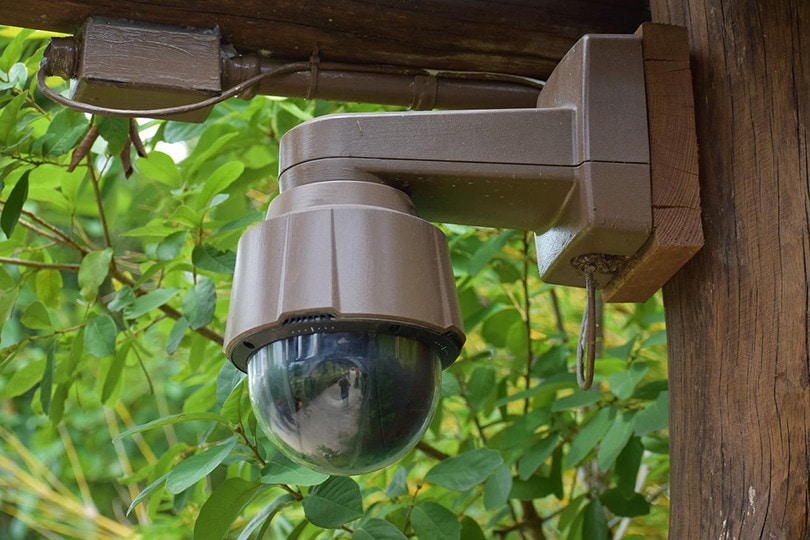
Off-Street Windows
Other than the front and back doors, burglars also attempt to access your home from the rear or off-street side windows. Again, these windows are usually away from the main street and reduce the chance of getting caught by neighbors and passing cars.
As a homeowner, you should think one step ahead of the thieves and install the cameras off-street.
Similarly, first-floor windows offer burglars easy access for breaking into the home. A comprehensive security system includes installing security cameras above first-floor windows. When pointing the security cameras towards the windows, you must be careful with the reflection and glare.
Basements
You should not forget to install a security camera in a basement with an entrance from the back or side of the house. These entrances are usually concealed and rarely used, so intruders can benefit from them by breaking into your home.
Are There Other Places to Install Security Cameras?
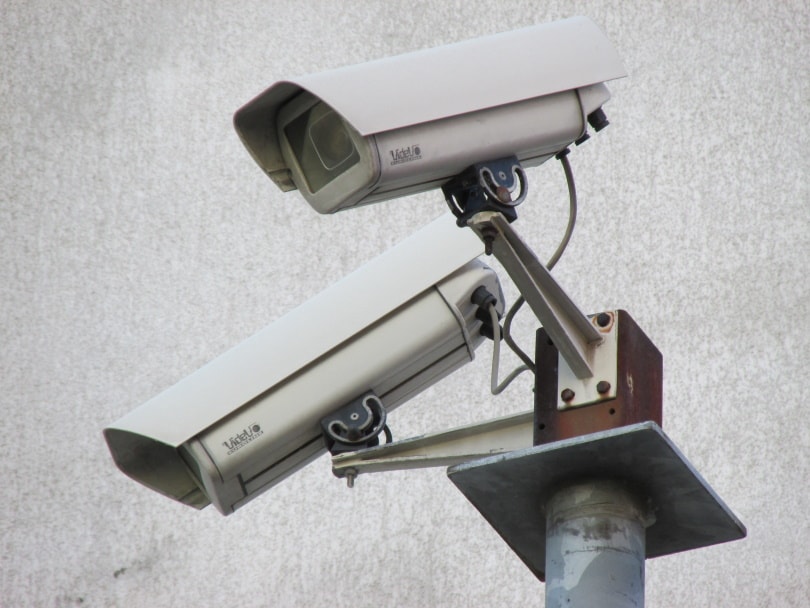
You might be wondering about other places to install cameras to maximize your protection. For instance, you can cover your hallways, second floor, and staircases by installing security cameras with motion detection.
You should consider installing security cameras on the second floor, sliding windows, patio, and backyards if you have enough budget. I
nstalling a security camera in the backyard also facilitates monitoring your kids’ and pets’ activities and any suspicious passersby.
Additionally, installing indoor cameras in the kitchen and living room allows you to watch your kids, household help, babysitters, cleaners, and elderly parents. Similarly, you should also mount a camera on the main stairway and hallway to detect the movement of the robbers who break inside via the bedroom or bathroom window. The more cameras you have, the more control you have over who enters your home and what happens when you’re not around.
Where Not to Install Security Cameras
It’s also essential to consider locations where you should never install security cameras. Here are a few tips:
- You should avoid mounting cameras that point toward the neighbors’ windows and rooms because you could be violating their privacy. Refer to your state’s laws regarding cameras and respective privacy policies.
- Don’t install cameras that invade a family member’s privacy, like installing indoor security cameras in bathrooms and bedrooms. However, installing the cameras in the living room, kitchen, and hallways is understandable as they allow you to monitor the actions of your home’s common spaces.
Installing Wireless Cameras
Wireless cameras are flexible and only require a Wi-Fi connection and a power source to operate. However, you must ensure a consistent wireless connection with higher bandwidth for smooth operations of the wireless cameras.
On the contrary, if the Wi-Fi signal is weak, the video or images captured by the wireless cameras will be distorted. Unfortunately, you can’t use a blurred image as evidence in case of a break-in.
Battery-Operated vs. Power Plug-In Cameras
Battery-operated security cameras ensure hassle-free and cable-free installation. Similarly, you can also opt for solar-powered cameras if you don’t have a nearby power source.
On the contrary, you must plug the standard cameras into a power connection and manage all the cables during installation.
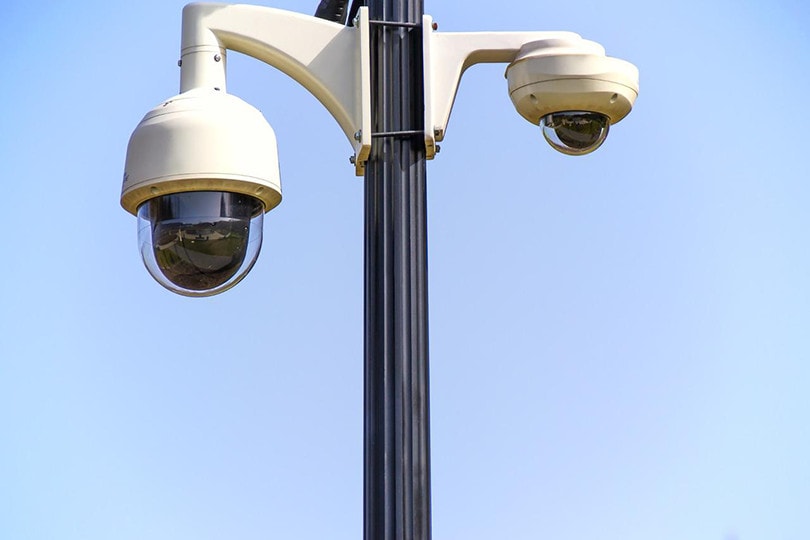
Using the Security Cameras
The security requirements vary from one homeowner to another depending on the house size, total number of family members, and the time you spend outside the home.
Here are some tips for operating your security cameras:
- Since people travel horizontally, you might also install their cameras in the same orientation and not vertically. The camera sensors efficiently capture the motion while people travel horizontally across the camera’s field of view.
- You shouldn’t overuse the cameras. As a result, you shouldn’t use a single camera to monitor the backyard, street, and driveway. Instead, you must use separate cameras to monitor different locations.
Security Camera Placement Tips
Let’s briefly discuss the dos and don’ts of installing security cameras indoors and outdoors:
- Highlocations aren’t ideal because they won’t capture or identify a robber’s face.
- The ideal place for installing security cameras is where the walls meet the ceiling. This upper corner is usually out of reach of the intruders, and it offers a wide field of view.
- You should never install a camera with no or minimal light at night. Activate the infrared and night vision settings for low-light areas or install external light or motion sensors to ensure visibility and detect movement.
- Buy weatherproof and water-resistant outdoor cameras.
- It’s best to install the mounting brackets to stabilize the camera.
- You should set up the base unit in the attic as it serves as the best location for the camera

Conclusion
We can’t emphasize enough the importance of placing security cameras indoors and outdoors to protect your home, family, and other personal belongings. When it comes to home security, you can’t implement a one-size-fits-all approach.
Instead, after selecting versatile cameras, you must install them in all the places discussed above. Lastly, we’ll conclude that it won’t matter how many cameras you install if you don’t position them correctly.
Featured Image Credit: KsanderDN, Shutterstock
Table of Contents
- Before You Start
- 5 Ideal Locations Around Your Home to Install Security Camera
- Are There Other Places to Install Security Cameras?
- Where Not to Install Security Cameras
- Installing Wireless Cameras
- Battery-Operated vs. Power Plug-In Cameras
- Using the Security Cameras
- Security Camera Placement Tips
- Conclusion
About the Author Jeff Weishaupt
Jeff is a tech professional by day, writer, and amateur photographer by night. He's had the privilege of leading software teams for startups to the Fortune 100 over the past two decades. He currently works in the data privacy space. Jeff's amateur photography interests started in 2008 when he got his first DSLR camera, the Canon Rebel. Since then, he's taken tens of thousands of photos. His favorite handheld camera these days is his Google Pixel 6 XL. He loves taking photos of nature and his kids. In 2016, he bought his first drone, the Mavic Pro. Taking photos from the air is an amazing perspective, and he loves to take his drone while traveling.
Related Articles:
How to Clean a Refractor Telescope: Step-by-Step Guide
How to Clean a Telescope Eyepiece: Step-by-Step Guide
How to Clean a Rifle Scope: 8 Expert Tips
Monocular vs Telescope: Differences Explained (With Pictures)
What Is a Monocular Used For? 8 Common Functions
How to Clean a Telescope Mirror: 8 Expert Tips
Brightfield vs Phase Contrast Microscopy: The Differences Explained
SkyCamHD Drone Review: Pros, Cons, FAQ, & Verdict
